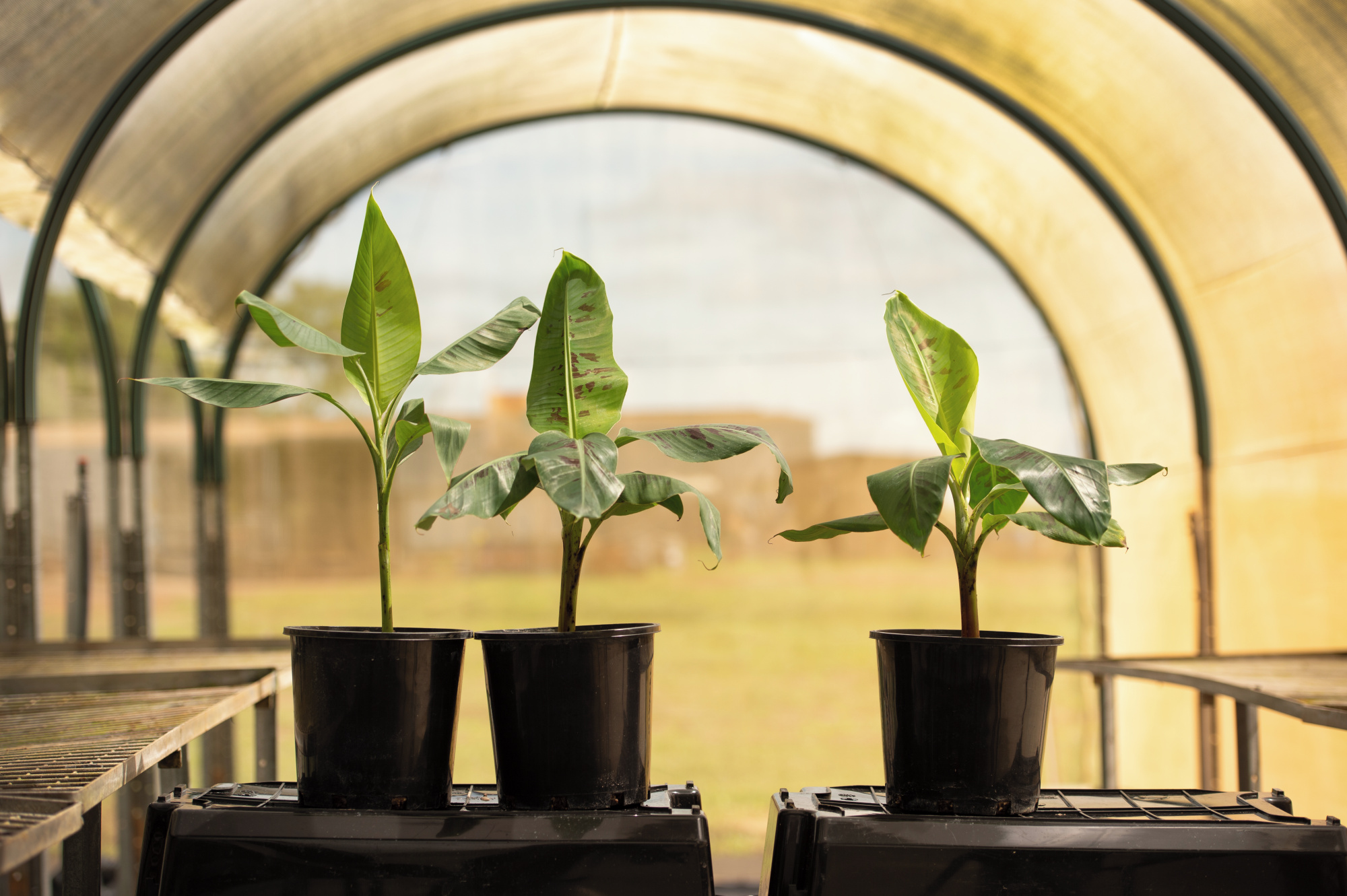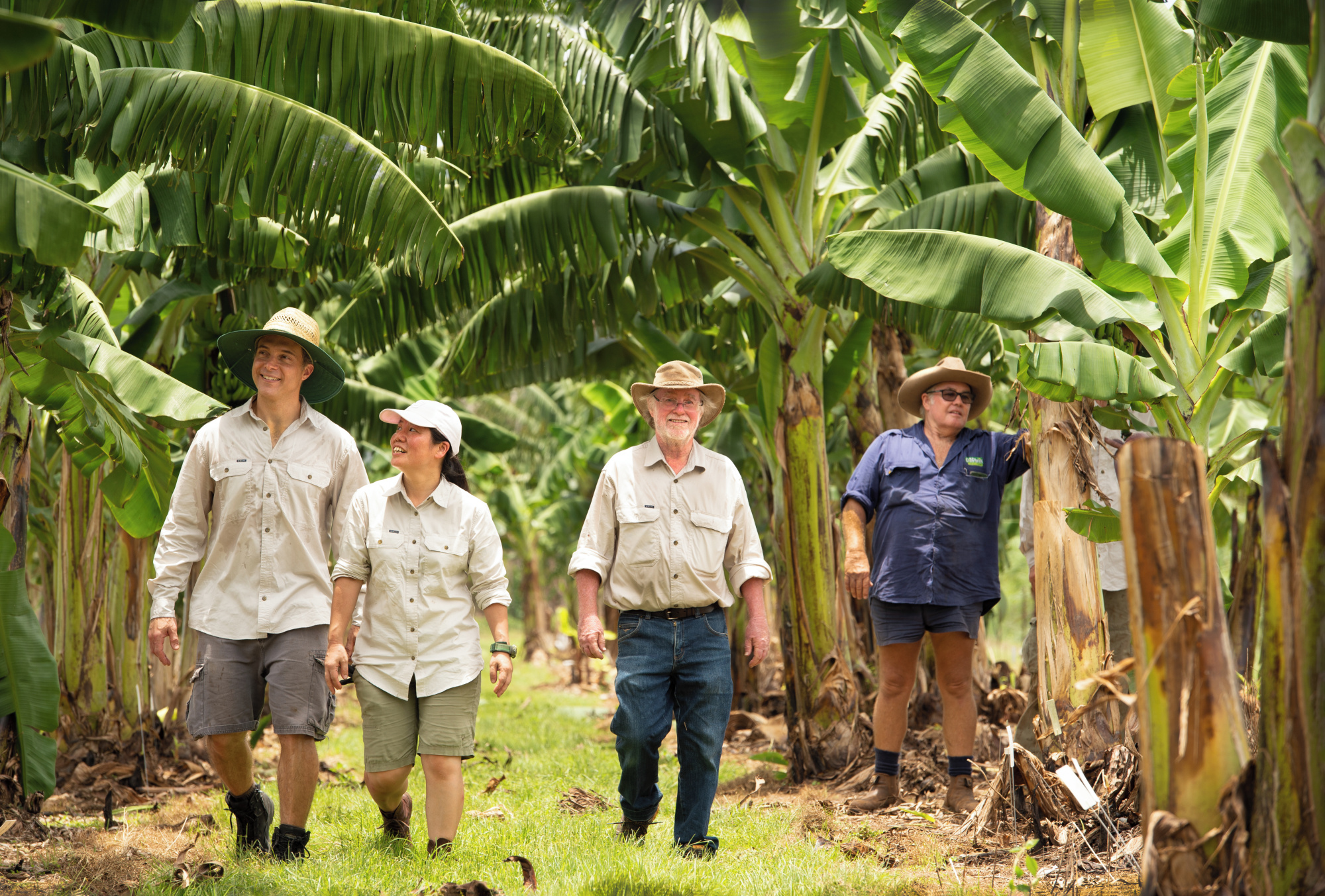A QUT-developed genetically modified (GM) variety of Cavendish banana designed to help save the world's Cavendish banana production has been submitted for regulatory approval to the Australian Government.
Read QCAV-4 Frequently Asked Questions here
The QCAV-4 banana is the first Australian GM fruit to be submitted for assessment. If approved, it would offer a potential safety net against the devastating Panama Disease tropical race 4 (TR4) which threatens the world's US$20 billion banana industry.
QCAV-4 bananas, developed in partnership with government and industry, have been grown in field trials in the Northern Territory for over six years and have proven to be highly resistant to Panama Disease TR4.
Panama Disease TR4 has already crippled Cavendish banana production in Asia, has started to take a foothold in South America and occurs in Australia in the Northern Territory and North Queensland.
QCAV-4 is a Cavendish Grand Nain banana that has been bioengineered with a single gene, RGA2, from the wild, south-east Asian banana, Musa acuminata ssp malaccensis. Cavendish bananas already contain the RGA2 gene, but it is dormant.
QCAV-4 is currently being assessed by the Australian Government regulatory authorities, the Office of the Gene Technology Regulator (OGTR) and Food Standards Australia New Zealand (FSANZ).

QUT Distinguished Professor James Dale and his team have been working on developing and growing genetically modified Cavendish bananas for more than 20 years.
"The devastating Panama Disease TR4 is caused by a soil-borne fungus that stays in the ground for more than 50 years, wiping out banana crops and destroying farms for generations," Professor Dale said.
"It is a huge problem. It has devastated Cavendish plantations in many parts of the world and could cripple the Cavendish banana export industry worldwide."
Australia's world-class biosecurity rules have so far limited the impact of Panama Disease TR4 on the majority of the Australian industry, however it has been found in parts of North Queensland and has decimated the Northern Territory commercial banana industry.

"About 95 per cent of Australia's bananas are grown in Queensland, and Cavendish banana accounts for 97 per cent of production," Professor Dale said.
"Apart from providing a genuine protection against Panama Disease TR4 for the world's export industry, QCAV-4 is a safety net for Australia's $1.3 billion industry, which includes protected employment for 18,000 Queenslanders involved in banana production."
While regulatory approval by OGTR and FSANZ would support the environmental and food safety of QCAV-4, there are no plans to grow or sell QCAV-4 bananas to consumers in Australia at this time.
Caption top image: QUT Distinguished Professor James Dale with young banana plants in a shadehouse at the QUT field trial site in the Northern Territory. Pictured on Professor Dale's right is a wild banana plant, and on his left, is a Cavendish banana plant.






